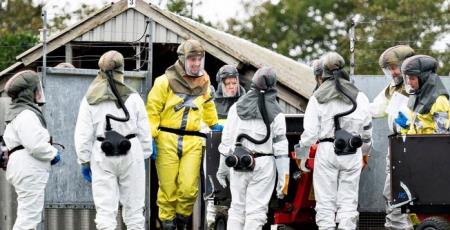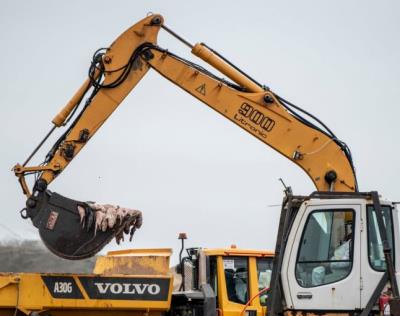Following outbreaks of commercially farmed mink in Holland and Denmark, authorities initiated strict quarantine followed by depopulation of affected farms as a public health measure. It is not surprising that mink are susceptible to SARS-CoV-2 given that a close relative, ferrets are used as a laboratory animals to study coronavirus infections. Scientists in the E.U. clearly established that mink transmit COVID infection to humans and vice-versa. The U.S. has recorded outbreaks of COVID in Utah, Wisconsin, Michigan and Oregon, the states with significant mink production.
the E.U. clearly established that mink transmit COVID infection to humans and vice-versa. The U.S. has recorded outbreaks of COVID in Utah, Wisconsin, Michigan and Oregon, the states with significant mink production.
The introduction of a new pathogen into a dense population of susceptible animals will result in rapid dissemination of the infectious agent. The higher the density of susceptible individuals in a population, the greater will be the rate of spread and multiplication of an infective virus. Depending on the structure of the virus, a high concentration of infected hosts will increase the probability of point mutations resulting in potentially enhanced or alternatively reduced pathogenicity or infectivity. A mutation has apparently occurred in the SARS-CoV-2 virus affecting mink in the dense location of farms on the Island of Jutland in Denmark. The mink strain has been isolated from humans in contact with mink but more worrisome, also among humans in urban centers far removed from the mink farms with evidence of community transmission. In mid-December a mutant mink strain emerged in farms in Greece.
 The high probability of the escape of infected mink from farms infected with COVID is an important justification to rapidly deplete populations. In Denmark, trappers frequently capture feral mink suggesting that COVID infection could be transmitted to other wild mustelids including weasels, badgers, and otters.
The high probability of the escape of infected mink from farms infected with COVID is an important justification to rapidly deplete populations. In Denmark, trappers frequently capture feral mink suggesting that COVID infection could be transmitted to other wild mustelids including weasels, badgers, and otters.
The International Society for Infectious Diseases has notified the World Organization for Animal Health (OIE) of the isolation of SARS-COVID-2 from feral mink in the vicinity of farms in Utah. The Society commented, “To our knowledge this is the first free-ranging native wild animal confirmed with SARS-COVID-2.” The investigators were unable to determine the presence of the virus in other wildlife species surveyed. At this time it is known that a variety of felidae are susceptible to COVID ranging from domestic cats in households usually with an infected human, in addition to tigers, lions and leopards in zoos infected by keepers. Since mink are solitary animals, widespread infection of wildlife is unlikely. It is not known how long infected mink will shed the virus so it is uncertain whether a wildlife reservoir of COVID-19 could be established.
In the absence of an effective vaccine that will suppress both clinical signs and shedding, mink farms with their high concentration of animal in close proximity will represent a risk for the development of mutant strains of SARS-CoV-2. There is some debate as to the legal justification for complete depletion of unaffected mink populations as in Denmark. The Netherlands had in any event banned commercial mink production after 2024 and has advanced the date of depletion on a national basis with compensation.
Since mink are not food animals it is questioned whether perpetuation of commercial farming is justified given the risks of COVID-19. Maintaining animals such as mink in cage housing virtually identical to layer cages for hens is regarded as inhumane. Obviously the susceptibility of mink to COVID-19 will be used by animal rights groups to justify ending commercial fur production.
There is concern that state departments of agriculture in Utah and Oregon are minimizing the problem of COVID in mink. To date the only action taken has been to quarantine affected farms, a strategy that appears to be ineffective given the spread of infection over a short period. Misleading placatory statements have been issued by the spokespersons for departments of agriculture in Oregon and Utah. The assurance that COVID in mink does not represent a danger to public health lacks a scientific basis. We have seen this movie before!
COVID-19 has clearly focused public concern over how mink are housed and there are questions as to the ethics and morality of the industry, its contribution to society and its reason for existence in an advanced industrialized nation such as the U.S. or in E.U. counterparts.